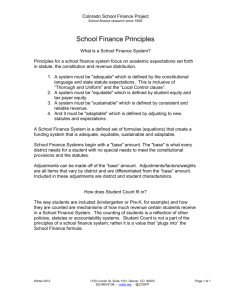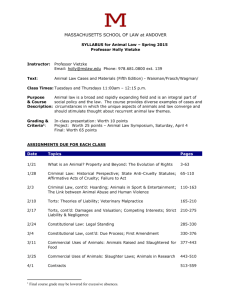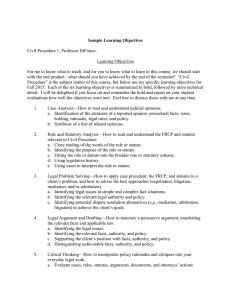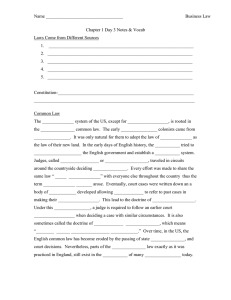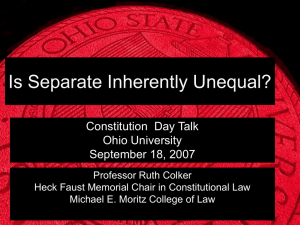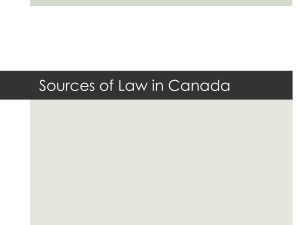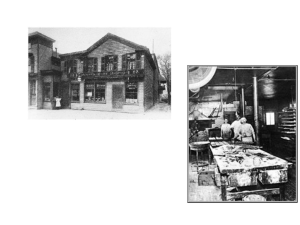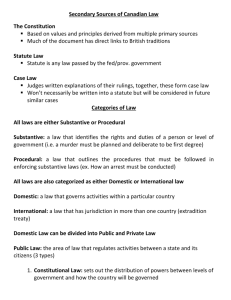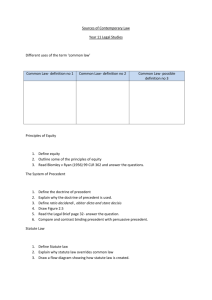Sources of Law in Canada Chapter 2
advertisement
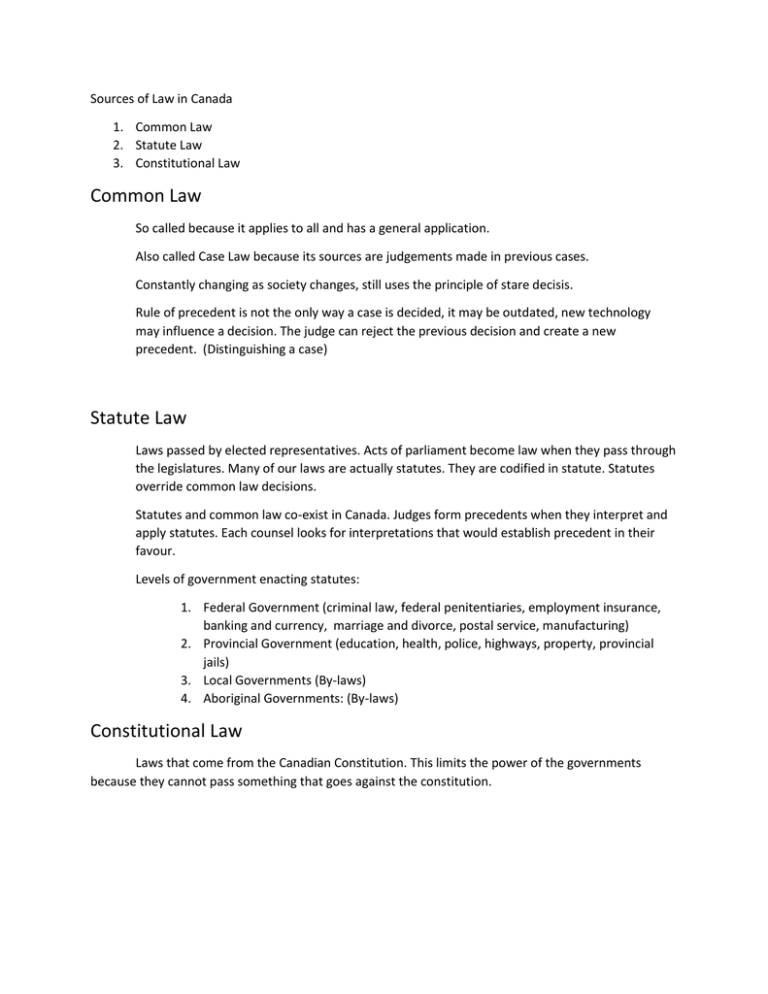
Sources of Law in Canada 1. Common Law 2. Statute Law 3. Constitutional Law Common Law So called because it applies to all and has a general application. Also called Case Law because its sources are judgements made in previous cases. Constantly changing as society changes, still uses the principle of stare decisis. Rule of precedent is not the only way a case is decided, it may be outdated, new technology may influence a decision. The judge can reject the previous decision and create a new precedent. (Distinguishing a case) Statute Law Laws passed by elected representatives. Acts of parliament become law when they pass through the legislatures. Many of our laws are actually statutes. They are codified in statute. Statutes override common law decisions. Statutes and common law co-exist in Canada. Judges form precedents when they interpret and apply statutes. Each counsel looks for interpretations that would establish precedent in their favour. Levels of government enacting statutes: 1. Federal Government (criminal law, federal penitentiaries, employment insurance, banking and currency, marriage and divorce, postal service, manufacturing) 2. Provincial Government (education, health, police, highways, property, provincial jails) 3. Local Governments (By-laws) 4. Aboriginal Governments: (By-laws) Constitutional Law Laws that come from the Canadian Constitution. This limits the power of the governments because they cannot pass something that goes against the constitution. Categories of Law: 1. International Law 2. Domestic Law International Law: (p.39) Governs nations’ relationships with each other. International law is usually created by custom. Nations sign treaties or international agreements. (extradition treaties, defence treaties) Organizations can have international status (UN, ICJ) Domestic Law: (case and statute) a. Substantive Law b. Procedural Law Case study: p. 41 Substantive Law (content of the law) Defines rights, duties and obligations of citizens and governments. Divided into Public Law and Private Law. Procedural Law Methods of enforcing the rights and obligations of substantive law. Public Law Regulates the relationship between the government and its citizens. All subject to the Canadian Charter of Rights and Freedoms a. Administrative (p.43) b. Criminal (p. 43) c. Constitutional Private Law (civil Law) Regulates relationships between private individuals and individuals and organizations. a. b. c. d. e. f. Tort Law (p. 45) Contract Law (p. 45) Family Law (p. 45 - 46) Wills and Estates (p. 46) Property Law (p. 46) Employment Law (p. 46)
